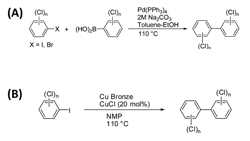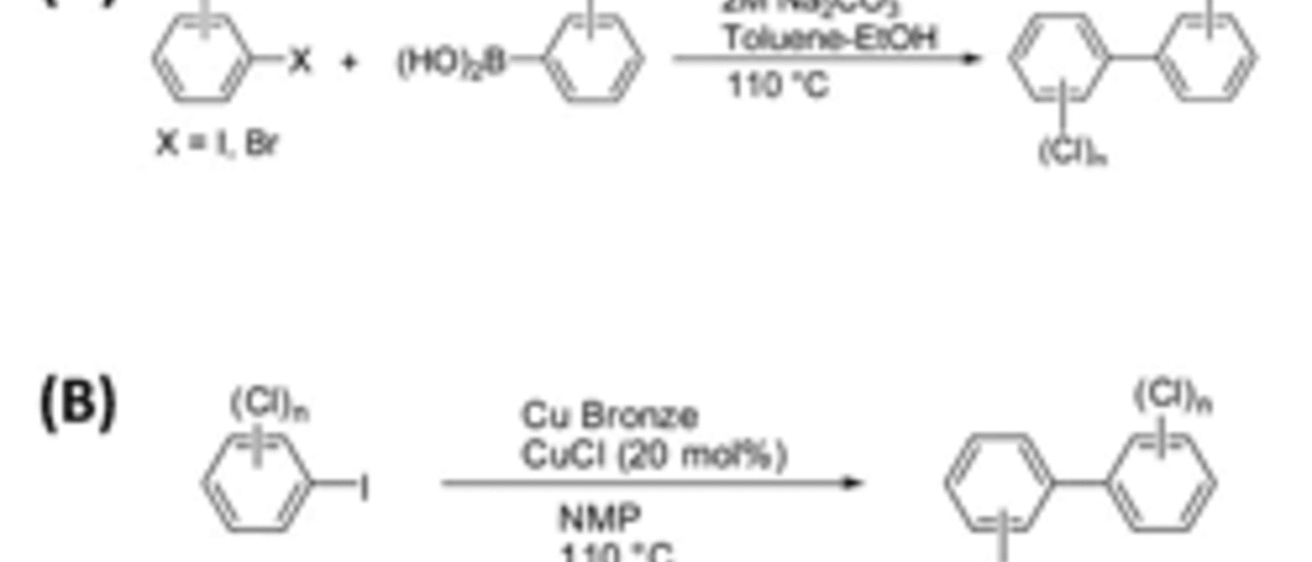Main navigation

We recently reported improved syntheses of PCB congeners (and their metabolites) containing two or more ortho-chlorine substituents. (A) The Suzuki coupling reaction at 110 °C yielded PCB congeners with a 2,2’-substitution pattern in good yields (78-99%), but failed to give PCB congeners with 3 or 4 ortho chlorine substituents. (B) Symmetrically substituted PCB congeners with multiple ortho chlorine substituents were obtained in 20-52% yields using a modified Ullmann coupling reaction. The yield of the coupling increased with increasing degree of chlorination of the starting material. The modified Ullmann coupling reaction employed much milder reaction conditions (copper-bronze/CuCl in N-methylpyrrolidinone, 110°C) and, therefore, appears to be advantageous compared to the classical Ullmann coupling reaction (copper-bronze, no solvent, 230°C). These modified reaction conditions allow the synthesis of large quantities of pure, non-dioxin-like PCB congeners for environmental and toxicological studies by overcoming problems associated with classical PCB synthesis strategies (Telu et al., Environ. Int., 2009).
